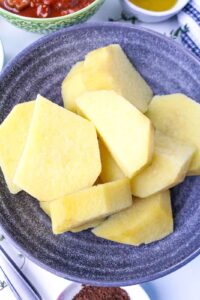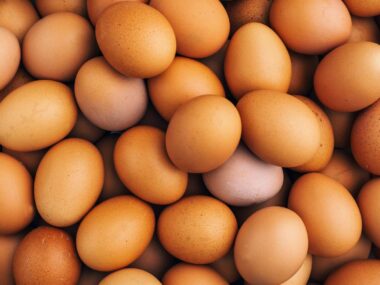Yam is a starchy root vegetable that is a staple in many parts of the world, particularly in Africa, Asia, the Caribbean, and Latin America. It is known for its versatility, as it can be prepared in a variety of ways, and it serves as a significant source of carbohydrates and nutrients.

Characteristics of Yam
- Botanical Classification: Yam is not to be confused with sweet potatoes. Yams belong to the Dioscorea genus and are part of the Dioscoreaceae family, while sweet potatoes belong to the Convolvulaceae family. True yams are typically larger and more starchy than sweet potatoes.
- Varieties: There are several varieties of yam, with different colors, shapes, and sizes. Common varieties include white yam, yellow yam, and water yam. Each type has its unique characteristics and flavor.
- Texture: When cooked, yam has a starchy and fibrous texture that can be creamy or firm, depending on the cooking method and type of yam.
- Taste: Yam has a neutral, slightly sweet taste with earthy undertones. The flavor can vary between varieties.
Culinary Uses
Yam is an incredibly versatile ingredient in the culinary world, and it is used in various forms and dishes, including:
- Boiled Yam: One of the simplest preparations is boiling yam, often served with sauces, stews, or a drizzle of palm oil.
- Fried Yam: Sliced or diced yam can be deep-fried to create crispy yam fries, which are popular snacks or side dishes.
- Yam Porridge: Yam is used in a range of porridge-like dishes, often cooked with vegetables, meats, or fish in a flavorful sauce.
- Mashed Yam: Cooked yam can be mashed and blended with seasonings and ingredients like butter, coconut milk, or spices to make a creamy and satisfying side dish.
- Yam Pottage: This is a one-pot dish where yam is cooked with a mixture of vegetables, spices, and protein sources like fish or meat.
- Yam in Soups: Yam can be added to traditional soups and stews in various cuisines. For example, in West Africa, yam is used in yam pepper soup, a spicy and aromatic soup made with yam and assorted meats.
- Yam Fufu: In many African countries, yam is pounded and molded into a dough-like consistency called fufu, which is typically served with soups and stews.
Nutritional Value
Yam is a good source of carbohydrates, dietary fiber, vitamins, and minerals:
- Carbohydrates: It is rich in complex carbohydrates, providing a substantial source of energy.
- Dietary Fiber: Yam contains dietary fiber, which aids digestion and helps maintain a feeling of fullness.
- Vitamins: It is a source of essential vitamins like vitamin C, vitamin B6, and folate.
- Minerals: Yam contains minerals such as potassium, manganese, and copper.
- Low in Fat: Yam is low in fat, making it a suitable choice for a low-fat diet.
- Antioxidants: Some yam varieties contain antioxidants like anthocyanins, which have health benefits.
However, it is important to note that yam should be cooked before consumption, as raw yam contains compounds that can be toxic when eaten in large quantities. Cooking yam neutralizes these compounds, making it safe to eat.
Finally, Yam is a nutritious and delicious staple in many parts of the world, offering a wide range of culinary possibilities. Whether you prefer it fried, boiled, or used in soups and stews, yam is an integral part of many cuisines and is enjoyed for its unique flavor and satisfying texture.










